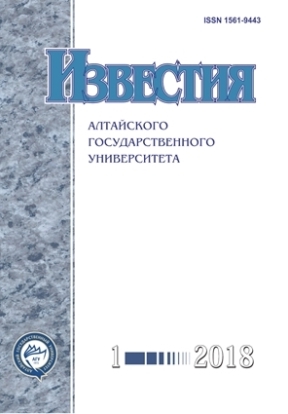Secondary Regimes of Magnetohydrodynamic Flow in a Bent Channel
Abstract
The study of electrically conductive fluid flow in a magnetic field becomes relevant when plans for construction of research and industrial thermonuclear reactors are implemented. Such facilities contain a large number of complex shape pipes, in which liquid metals move in the presence of magnetic fields. Real life experiments are costly, so a large role in research and design is given to numerical modeling. The authors consider the flow of a viscous electrically conductive liquid within a 90 degree bent pipe. The liquid flows through the pipe under the action of a pressure gradient, the magnetic field is directed parallel to the inlet branch of the channel. The MHD solver based on the Nektar++ spectral/hp library is used for flow simulation. The spectral/hp method includes high accuracy of spectral methods and spatial flexibility of finite-element methods. At the present time, spectral-element methods are actively developed. In the paper, secondary stationary modes of magnetohydrodynamic flow are revealed to be different from the case without the magnetic field: a vortex or counterflow of liquid is formed in the inlet branch of a channel, while the flow separation in the outlet branch is suppressed by the magnetic field.
DOI 10.14258/izvasu(2018)1-07
Downloads
Metrics
References
Proskurin A.V., Sagalakov A.M. A new branch of instability of the magnetohydrodynamic Poiseuille flow in a longitudinal magnetic field //Technical Physics Letters. — 2008. — Т. 34, №. 3.
Pellegrini M., Endo H., Ninokata H. Numerical investigation of bent pipe flows at transitional Reynolds number // In Progress in Nuclear Energy. — 2011, Volume 53, Issue 7. D01:10.1016/j.pnucene.2011.02.005.
Spedding P., Benard E., McNally G. Fluid flow through 90 degree bends // AsiaPacific Journal of Chemical Engineering. — 2004. — Т. 12, № 1-2. D0I:10.1002/apj.5500120109.
Davidson P.A. An Introduction to Magnetohydrodynamics. — Cambridge: 2001.
Landau L., Lifshitz E. Electrodynamics of Continuous Media (Second Edition Revised and Enlarged), volume 8 of Course of Theoretical Physics. — Amsterdam: 1984.
Krasnov D., Zikanov O., Boeck T. Comparative study of finite difference approaches in simulation of magnetohydrodynamic turbulence at low magnetic Reynolds number. // Computers & fluids. 2011, 50(1). D0I:10.1016/j.compfluid.2011.06.015.
Patera A.T. A spectral element method for fluid dynamics: laminar flow in a channel expansion //Journal of computational Physics. — 1984. — Т. 54, № 3.
Cantwell C.D., Moxey D. et al Nektar plus plus : An open-source spectral/hp element // Computer Physics Communications. — 2015, 192. D0I:10.1016/j.cpc.2015.02.008
Karniadakis G., Sherwin S. Spectral/hp Element Methods for omputational Fluid Dynamics: Second Edition. — 0xford: 2005.
Proskurin A.V., Sagalakov A.M. A spectral/hp element solver for magneto-hydrodynamics // arXiv preprint arXiv:1707.08957. — 2017.
Karniadakis G., Israeli M., Orszag S. High-order splitting methods for the incompressible Navier-Stokes equations //Journal of computational physics — 1991. — 97,2. D0I:10.1016/0021-9991(91)90007-8.
Copyright (c) 2018 А.В. Проскурин, А.М. Сагалаков

This work is licensed under a Creative Commons Attribution 4.0 International License.
Izvestiya of Altai State University is a golden publisher, as we allow self-archiving, but most importantly we are fully transparent about your rights.
Authors may present and discuss their findings ahead of publication: at biological or scientific conferences, on preprint servers, in public databases, and in blogs, wikis, tweets, and other informal communication channels.
Izvestiya of Altai State University allows authors to deposit manuscripts (currently under review or those for intended submission to Izvestiya of Altai State University) in non-commercial, pre-print servers such as ArXiv.
Authors who publish with this journal agree to the following terms:
- Authors retain copyright and grant the journal right of first publication with the work simultaneously licensed under a Creative Commons Attribution License (CC BY 4.0) that allows others to share the work with an acknowledgement of the work's authorship and initial publication in this journal.
- Authors are able to enter into separate, additional contractual arrangements for the non-exclusive distribution of the journal's published version of the work (e.g., post it to an institutional repository or publish it in a book), with an acknowledgement of its initial publication in this journal.
- Authors are permitted and encouraged to post their work online (e.g., in institutional repositories or on their website) prior to and during the submission process, as it can lead to productive exchanges, as well as earlier and greater citation of published work (See The Effect of Open Access).








